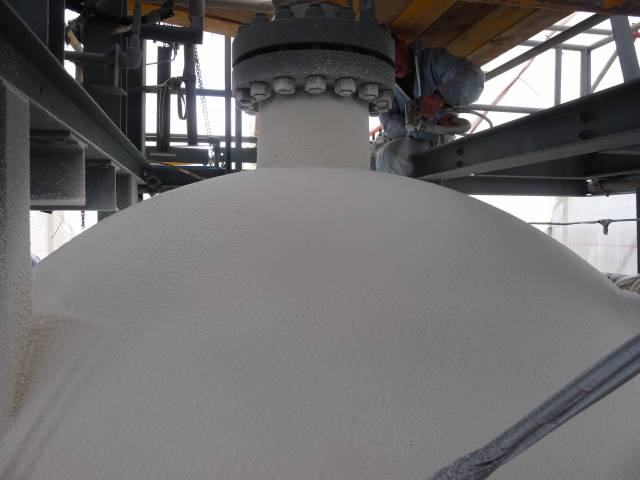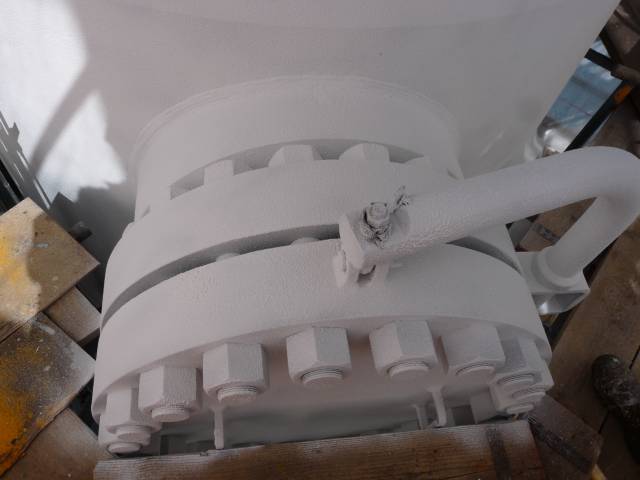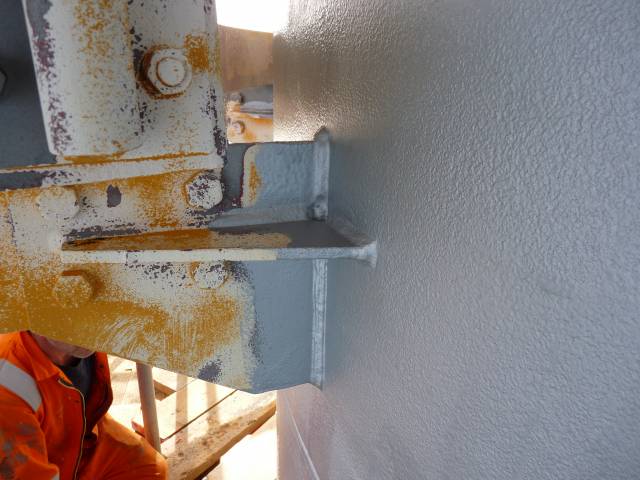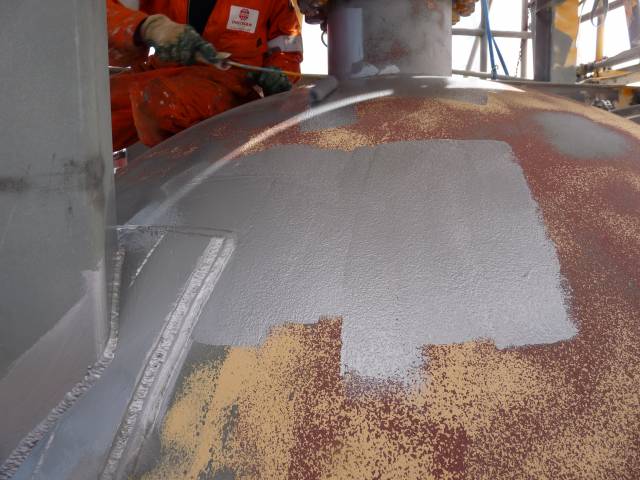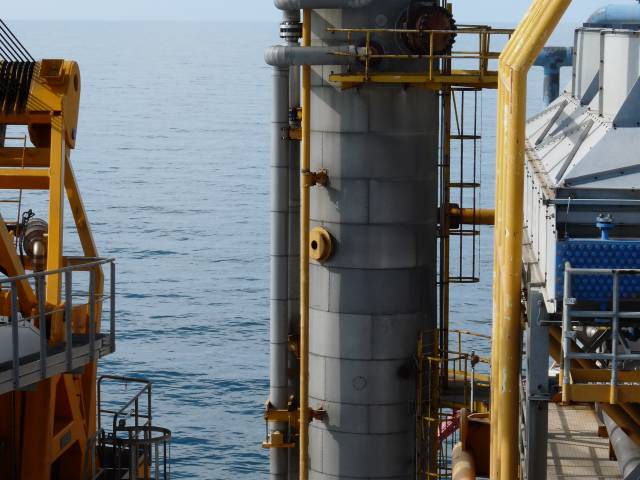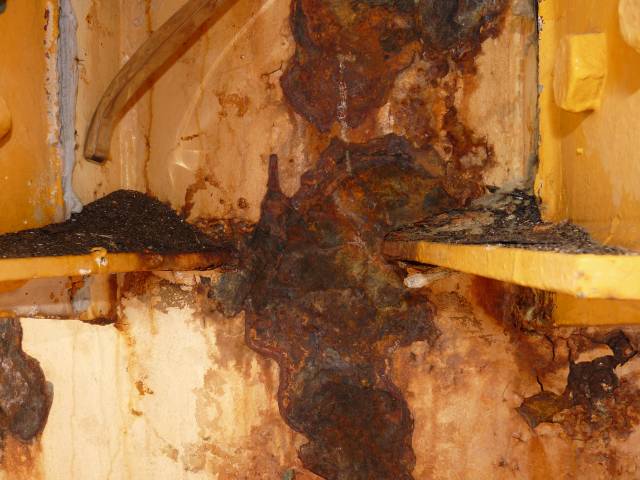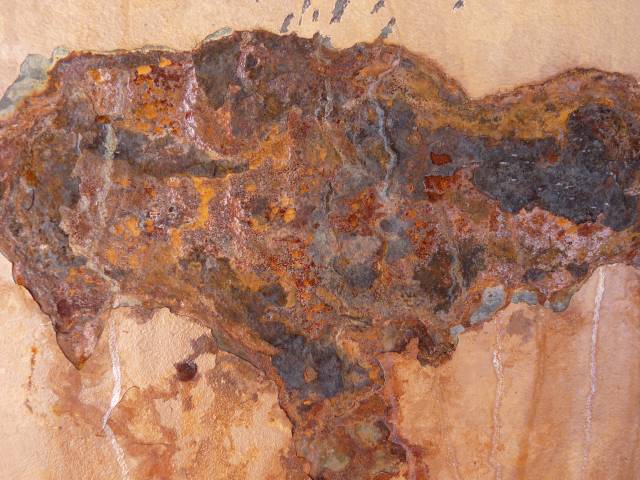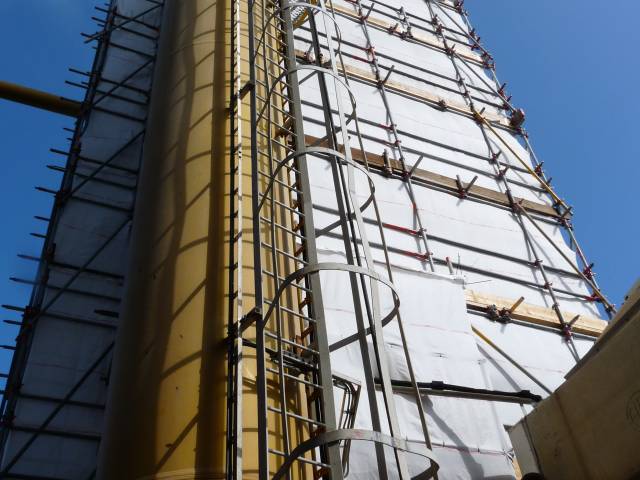Confidential
- Markets:Energy & Mining
- Country:Confidential
- Courtesy of:Superior Products Netherlands
Project Description
Application of protective and insulative coating on a gas absorber. Surface was heavily corroded due to a very common problem in traditional insulation materials and systems, namely corrosion under insulation (CUI). Besides this, traditional insulation materials tend to absorb moisture and lose their insulation value gradually.
Coating Solution
- RUST GRIP as protective layer, rust inhibitor and primer (150-200 mu)
- HOT SURFACE COATING as an insulative layer (10 mm)
- ENDUROOF as a protective top coat for the HOT SURFACE COATING (1.2 – 1,5 mm)
- ENDURO TOP-E for (UV) protection
The vessel was completely covered from top to bottom with scaffolding and a tent. After removing the old insulation material the complete vessel was power washed with water to remove all dirt, loose particles and any existing chlorides.
After a shut down for welding, the system was fully operational again for the rest of the application. The complete vessel was blasted to SA1 on the lightly affected area’s with still good adhesion of the old coating system and up to SA3 on the heavily corroded areas.
RUST GRIP was applied as a primer in 2 coats with a total DFT of around 150-200 micron DFT. This is a bit more than the specifications, possible because of the higher temperature of the surface. Usage per square meter is about 0,25 – 0,35 litre (depending on surface and details).
Next step was that 10 mm of HOT SURFACE COATING was applied on the surface to reduce the surface temperature with 35% and save on energy for heating the MDEA gas absorber. HOT SURFACE COATING was applied with a 57 liter Graco pressure vessel with a RTX Texture spray gun. It was built up in roughly 4 layers: first layer with a 3 mm nozzle between 1,5-2 mm, additional layers with a 4 mm nozzle around 3 mm until 10 mm was reached
HOT SURFACE COATING was applied directly over manholes, trunnions and valves, to ensure a seamless insulation layer around the vessel which prevents insulation ‘leaks’ and (salt) water contamination of the treated surface. After the 10 mm thickness of the HOT SURFACE COATING layer was reached, the surface was smoothened for esthetical reasons. For this a trowel was used.
Thereafter a protective top layer of ENDUROOF was applied to ensure a durable, watertight layer would prevent moisture penetrating the insulative layer and the treated surface of the vessel. (ENDUROOF is an elastic polyurethane roof coating with a 25 year water barrier certification.)
Finally, the complete system was top coated with the elastic protective polyurethane top coating ENDURO TOP-E which ensures a smooth finish, UV- and weathering protection of the system. Although this coating can be tinted in any desirable RAL color GDF chose to leave it transparent.
Results
The vessel is insulated and protected against further corrosion for many years. The surface temperature of the vessel has decreased from +/- 70-80°C to a more acceptable level of +/- 40-45°C. Temperatures have been reduced by +/-40%, which is in line with the expected temperature reduction stated in the COT report where a +/-36% reduction of temperature has been measured with a temperature of 70°C. The advantage of this system compared to other more traditional insulation systems is that the system will keep its insulative value, doesn’t degenerate and doesn’t allow water to reach the treated surface, which will help preventing any corrosion under insulation.
The total application time was 4 weeks including 8 days of stopping time caused by failure of a compressor, welding activities around the vessel and problems with a spray gun.
Products we used
We remain at your disposal for all enquiries you may have about our wide range of products. Have you not found the solution you are looking for, then let us find one for you.

